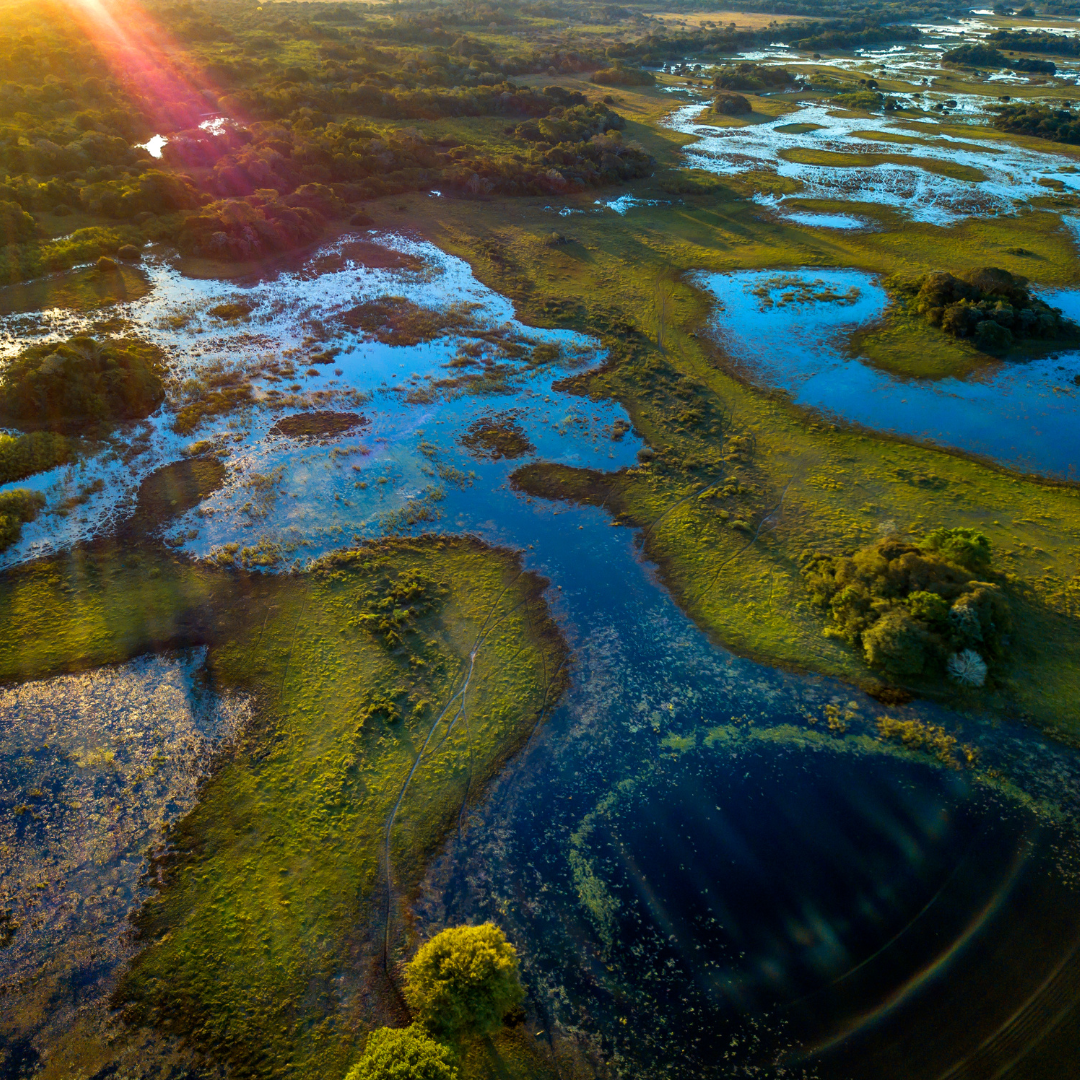The Pantanal by Boat: Exploring Brazil’s Wetland Wonderland and its Breathtaking Biodiversity

The vast stretch of wetlands shimmering under the South American sun, teeming with wildlife, and humming with the tunes of nature, is the Pantanal. This massive wetland, the largest of its kind on our planet, stretches primarily across Brazil, with parts touching Bolivia and Paraguay. Exploring this verdant paradise by boat provides a unique perspective into its wonders, offering intimate encounters with its mesmerizing biodiversity and introducing the visitor to the soul of this wetland – its people.
Entering the World’s Largest Tropical Wetland
The Pantanal is a breathtaking expanse, covering about 140,000–195,000 square kilometers. Its vastness is beyond imagination, and the scale of its biodiversity is unparalleled. Entering the Pantanal is akin to stepping into a natural amphitheater where nature stages its most impressive performances.
The landscape is an intricate mosaic of rivers, marshes, lagoons, and forests. During the rainy season, these terrains transform, submerging under water, turning the Pantanal into an aquatic realm. And as the water recedes in drier months, it leaves behind a thriving and pulsating world of life.
Wildlife Galore: Jaguars, Caimans, and More
One doesn’t merely visit the Pantanal; one experiences it. It’s a living spectacle of wildlife, with animals that seem straight out of nature documentaries. Jaguars, the apex predators of these wetlands, can be spotted near riverbanks, often lounging or on the prowl. The wetland also boasts the highest concentration of caimans in the world, and it’s not uncommon to spot them basking under the sun or silently stalking their prey.
Besides these, giant otters playfully navigate the waterways, capybaras graze the grasslands, and tapirs tread softly through the forests. Every twist and turn of the Pantanal presents a new creature, a new story.
Traditional Pantaneiro Culture and Livelihoods
The heart of the Pantanal beats in its people, known as the Pantaneiros. Descendants of indigenous tribes, settlers, and immigrants, they’ve mastered living harmoniously with the cycles of this wetland. Cattle ranching is their primary livelihood, with traditions passed down generations.
They are also adept fishermen, utilizing techniques that ensure sustainability. Stories of the Pantanal, its legends, its spirits, and its creatures are woven into their songs, dances, and daily lives. Engaging with them provides insights into a life that is deeply entwined with nature.
Navigational Tips for Pantanal’s Waterways
Navigating the waterways of the Pantanal requires skill, knowledge, and respect for nature. During the wet season, many regions become interconnected, and it’s crucial to understand the changing dynamics of the waterways. It’s advisable to have local guides on board, who are familiar with the terrain.
Using updated nautical charts, keeping a keen eye for submerged logs or obstacles, and understanding the behavioral patterns of aquatic animals, especially in narrower channels, are essential for a safe voyage.
Birdwatching: Meeting the Feathery Inhabitants
With over 1,000 bird species, the Pantanal is a birdwatcher’s paradise. Hyacinth macaws, with their striking blue plumage, are a sight to behold. Jabirus, the storks synonymous with the Pantanal, showcase their elegance along the waterways.
From the raucous calls of parrots to the melodious tunes of songbirds, the air is filled with avian symphonies. Every time of day brings new sightings, making the Pantanal an endless feast for the eyes and ears of bird enthusiasts.
Eco-tourism and Responsible Exploration
The Pantanal’s allure has made it a hotspot for eco-tourism. Many lodges and tour operators emphasize sustainable practices, ensuring that the wetland’s integrity is maintained. It’s essential to choose operators who prioritize eco-friendly practices, from waste management to using silent electric boat engines.
Educative programs, nature walks, and workshops are organized, ensuring visitors leave with not just memories but also knowledge.
Ensuring Minimal Impact: Guidelines for Sailors
For sailors charting the waters of the Pantanal, it’s imperative to adopt practices that ensure minimal impact. Anchoring in designated areas, avoiding regions with dense vegetation, and ensuring no waste is disposed of in the waters are crucial.
The use of eco-friendly products on board, avoiding noisy activities in sensitive regions, especially during breeding seasons, and maintaining a respectful distance from wildlife, ensure that the delicate balance of this ecosystem remains undisturbed.
The Pantanal is a testament to the wonders of nature, a realm where every moment is alive with the thrum of life. To journey here by boat is to engage in a dialogue with nature, to be a witness to the grandeur of life in its myriad forms. As the boat sails out of this wetland, one carries a piece of the Pantanal in their heart, a reminder of a world where life flourishes with unabashed splendor.


